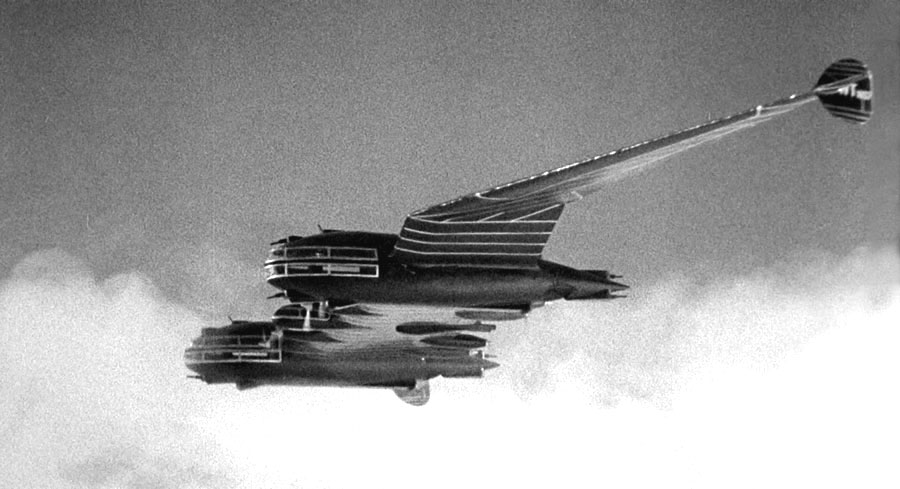While reading the
Wikipedia article about the T-35 tank today I noticed the claim that the tank was called a "land battleship". While this is nothing new - the term going back to the
Landship Committee in 1915 and H.G. Wells short story
The Land Ironclads before that - it was the realization that aircraft were not the only vehicles being compared to the massive airships of the time that was enlightening. (Coincidentally, The Land Ironclads was published in December 1903, which is of course the same month as the the Wright Brother's first flight.)
As a matter of fact, one could argue that H.G. Wells is partially responsible for the "Flying Fortress" nickname as well. His novel
The Shape of Things to Come, published in 1933, elaborates on the concept of an aerial fleet described in his 1907 work
The War in the Air. If the imagery in the
1936 movie adaptation is an accurate representation of Wells's thoughts, he had moved on from Zeppelins to large fixed wing aircraft:

(Source:
Roger Russell)
While the use of Zeppelins in his 1907 novel may seem to have been an incorrect prediction, it does support theory that "Flying Fortress" was actually a comparison with the battleship. In the novel, the German airship fleet attacks the United States
from across the Atlantic Ocean - just as battleships would have done. Therefore, the B-17 would have been the defense against this type of attack. (Also, keep in mind that
airships were the original "Queen of the Skies" - a name which evokes both large size and the imagery of leader of a kingdom that often gains their position from martial means.)
As an aside, upon reflection, it is interesting that science fiction and popular culture have paralleled the change in military theory as to the predominant naval platform by shifting from showing large hypothetical flying machines as battleships to aircraft carriers. Modern depictions of such aircraft - such as the Marvel Cinematic Universe's
Helicarrier, or Ace Combat 6's
Aigaion - often show designs that are more focused on deploying smaller craft to fight their battles rather than doing so directly themselves.
EDIT (25-03-13): Just to add another example of the role of globe spanning dirigible fleets in the popular imagination of the time, Rudyard Kipling's novellas
With the Night Mail and
As Easy as ABC feature not just such aerostats, but an entire world government upon them. In many ways, the "
Aerial Board of Control" is the aviation counterpart to
20,000 Leagues Under the Sea in that the reader is brought along with a class of people that is aloof from the concerns of the land-based world due to their advanced technology, but still intervenes at will. For those interested in checking the stories out themselves, a digitized copy of
With the Night Mail, along with other early examples of aviation science fiction, are summarized and linked to in a
blog post by the Internet Archive.
_________________
Tri-State Warbird Museum Collections Manager & Museum Attendant
Warbird Philosophy Webmaster





